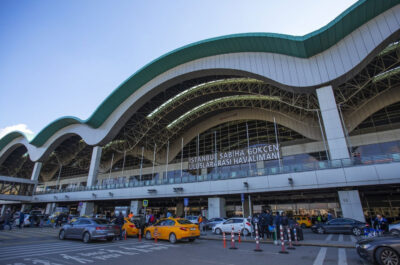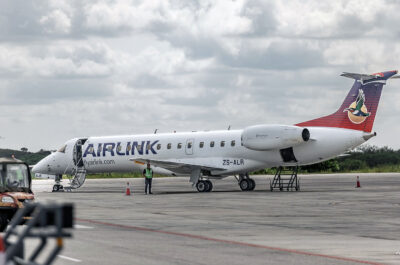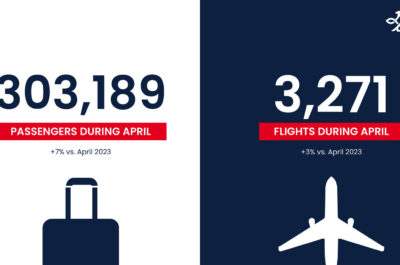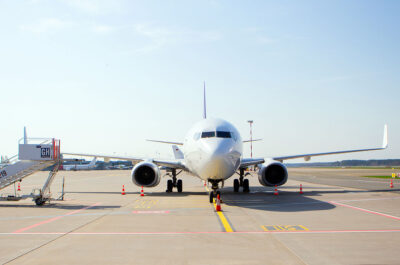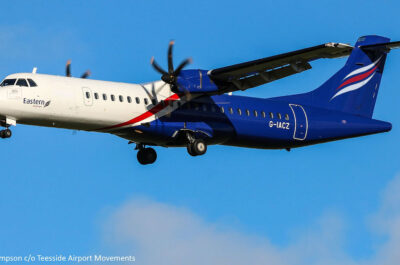When compared to pre-pandemic (2019) levels, passenger volumes stood at -7.7% in H1 — steadily improving over the period from -11% in January to -5.9% in June.
BRUSSELS – European airport trade body ACI Europe today released its air traffic report covering the month of June, as well as Quarter 2 (Q2) and the first half (H1) of 2023.
International demand brings passenger volumes close to full recovery
Passenger traffic across the European airport network increased by +28.3% in H1 2023 compared to the same period last year — with international traffic (+32.2%) growing at twice the rate of domestic traffic (+16.6%). The pace of growth eased in Q2 (+16.3%) compared to Q1 (+49%), reflecting the fact that COVID-19 restrictions on intra-European travel had largely been lifted as of April last year.
When compared to pre-pandemic (2019) levels, passenger volumes stood at -7.7% in H1 — steadily improving over the period from -11% in January to -5.9% in June.
Olivier Jankovec, Director General of ACI Europe, commented: “Passenger traffic has rebounded over the past 6 months, getting ever closer to a full recovery. However, 2023 is not 2019. There are significant variations in performance across national markets, and volumes still remain below their pre-pandemic levels for more than half (52%) of Europe’s airports. Apart from the lasting impact of the war in Ukraine on some markets, this is largely due to recovery patterns becoming structural. These include the impressive yet selective expansion of Ultra-Low Cost Carriers and relative retrenchment of Full Service Carriers along with the prominence of leisure and VFR1 demand as well as some domestic traffic shifting to other transport modes.”
“So far, demand has remained extremely resilient in the face of lasting inflationary pressures and record increases in airfares since the beginning of the year. But, looking ahead and past the peak Summer months, we do see significant downside risks and much uncertainty. These include the prospect of deteriorating macroeconomics for the Eurozone and the UK as well as initial signals that discretionary spending might start decreasing and that pandemic‑savings buffers are exhausted.”

Performance gaps amongst national markets
Airports in the EU+ market2 (+28.7%) and in the rest of Europe3 (+26.4%) grew passenger traffic at a similar pace in H1 compared to last year. But when compared to pre-pandemic (H1 2019) levels, airports in the rest of Europe (-2.1%) came closest to a full recovery, with the EU+ market (-8.7%) lagging behind.
- In June, the best passenger traffic performances in the EU+ market came from airports in Greece (+14.2%), Iceland (+9.3%), Luxembourg (+8.7%), Portugal (+8.1%) and Poland (+6.3%). Conversely, airports in Finland (-32.2%), Slovenia (-31.9%), Germany (-21.7%), Bulgaria (-20.5%) and Sweden (-18.8%) remained well below their pre-pandemic levels. Amongst the larger markets, airports in Italy (+1.9%) posted the best results, followed by those in Spain (-2.8), the UK (-6%) and France (-8.3%) – with airports in Germany being clear outliers.
- Looking at the rest of Europe, the best passenger traffic performance in June came from airports in Albania (+114.6%), buoyed by Ultra-Low Cost Carrier expansion — followed by those in Uzbekistan (+91.7%), Armenia (+87.6%), Kazakhstan (+43.6%) which benefited from Russian traffic shifting away from the EU+ market. Meanwhile, airports in Turkey (+0.6%) and Russia (+0.4%) achieved a full recovery.
Larger airports vs. regional/smaller airports
Passenger traffic at the Majors (top 5 European airports) in H1 remained at -8.9% below their pre-pandemic (H1 2019) levels – thus underperforming the European average.
- London-Heathrow (-4.3%) re-established itself as the busiest European airport in H1, handling 37 million passengers. Istanbul (+10.4%) came second with 35.6 million passengers and remains the only Major exceeding its pre-pandemic volumes.
- The Turkish hub was followed by Paris-CDG (-12.6% | 31.8 million passengers), Amsterdam-Schiphol (-17% | 28.7 million passengers) and Madrid (-2.7% | 28.5 million passengers).
- However, by June, Frankfurt (-20.1% | 26.9 million passengers) had rejoined the top 5 league, replacing Madrid in the fifth position.
Amongst other large airports (Group 1)4, the only ones having fully recovered their pre-pandemic passenger volumes in H1 were those relying on leisure/VFR demand and also benefitting from strong transatlantic demand: Lisbon (+8.7%), Athens (+7.3%), Palma de Mallorca (+3.8%), Istanbul Sabiha Gökçen (+1.6%) and Dublin (+1.5%).
Meanwhile, regional and smaller airports5 (+0.4%) fully recovered their pre-pandemic (2019) passenger volumes in H1 – and closed the month of June at +2.2%. However, there were also significant variations amongst these airports, with the ones serving popular tourism destinations and relying on Low-Cost Carriers often posting impressive performances.
These include for H1: Trapani (+163%), Perugia (+137%), Kutaisi (+82%), Zaragoza (+57%), Memmingen (+49%), Funchal (+41%), Lodz (+38%), Beauvais (+37%), Zadar (+23%), Ponta Delgada (+20%), Paphos (+19%) and Menorca (+18%).
Aircraft movements
Amongst the top 10 European airport for freight traffic, the best performances in H1 when compared to pre-pandemic volumes came from: Istanbul (+28%), Milan-MXP (+24%), Leipzig/Halle (20%), Madrid (+17%) and Koln-Bonn (+14%).
Aircraft movements in H1 increased by +15.5% across the European airport network compared to the same period last year, and decreased by -11% when compared to pre-pandemic (H1 2019) levels.
Data by airport groups
During H1, airports welcoming more than 25 million passengers per year (Group 1), airports welcoming between 10 and 25 million passengers (Group 2), airports welcoming between 5 and 10 million passengers (Group 3), and airports welcoming less than 5 million passengers per year (Group 4) reported an average change of – 10%, -10.1%, +1.7% and -1.2%, as compared to pre-pandemic levels (H1 2019).
The airports that reported the highest increases in passenger traffic in H1 when compared with the same period in 2019 are as follows:
- Group 1: Istanbul IST (+10.4%), Lisbon (+8.7%), Athens (+7.3%), Palma de Mallorca (+3.8%) and Istanbul SAW (+1.6%).
- Group 2: Milan BGY (+18.2%), Porto (+14.9%), Naples (+14.2%), Malaga (+9.3%) and Catania (+9.0%).
- Group 3: Sochi (+95.1%), Almaty (+50.1%), Belgrade (+25.8%), Rhodes (+15.5%) and Krakow (+14.8%).
- Group 4: Tirana (+105.1%), Yerevan (+62.6%), Memmingen (+49.1%), Vrellë/Lipjan (+44.0%) and Funchal (+41.0%).
1 Visiting Friends & Relatives.
2 EU, EEA, Switzerland and UK.
3 Albania, Armenia, Belarus, Bosnia & Herzegovina, Georgia, Israel, Kazakhstan, Kosovo, North Macedonia, Moldova, Montenegro, Russia, Serbia, Türkiye, Ukraine and Uzbekistan.
4 Airports with more than 25 million passengers per annum (2019).
5 Airports with less than 10 million passengers per annum (2019).
Theodore is the Co-Founder and Managing Editor of TravelDailyNews Media Network; his responsibilities include business development and planning for TravelDailyNews long-term opportunities.














